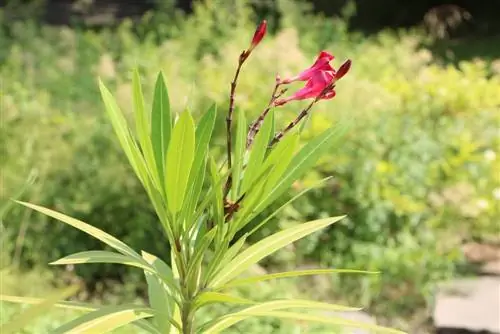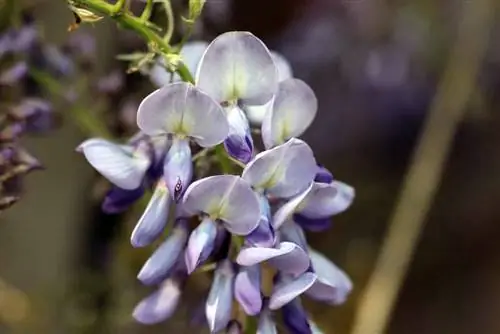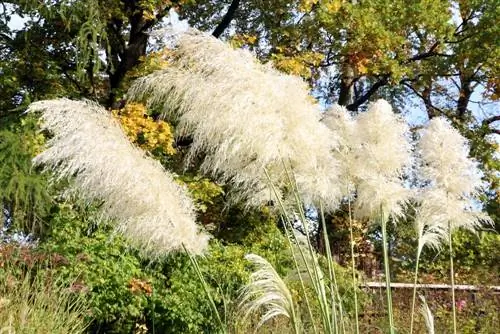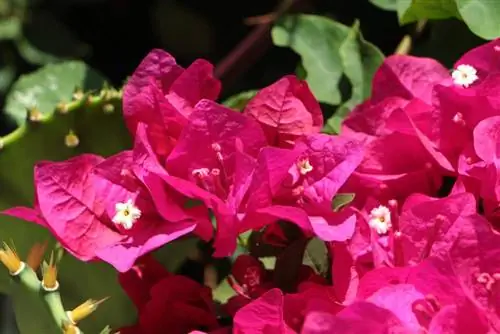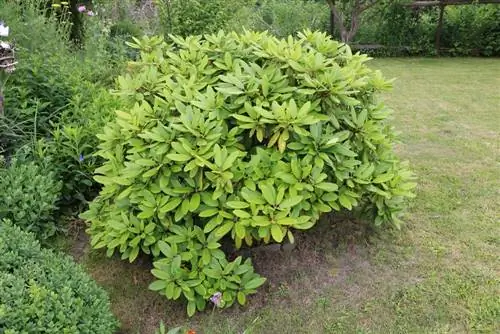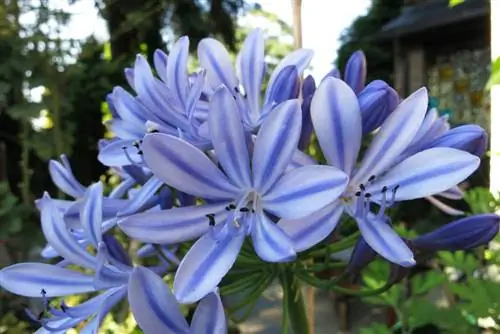- Author admin [email protected].
- Public 2023-12-17 03:39.
- Last modified 2025-01-24 12:45.
Wild oleander blooms outdoors in mostly pinkish red. Depending on the variety, the color range of the special varieties that can be found in our gardens ranges from white and yellowish to pink and purple. Since the flowers are structured as so-called truncated umbels, they look particularly impressive and fascinating. It's just stupid if the oleander doesn't want to bloom or the buds don't even open yet. The causes often lie well before the flowering period or in incorrect care.
Plant and flowering time
Nerium oleander, the complete Latin name for the oleander, is unique in the truest sense of the word. The plant is the only species within the genus Nerium. This species, in turn, belongs to the larger dogpoison family. It follows that the oleander is also poisonous - in all its parts. They contain the glycoside oleandrin, which can impair the activity of the heart muscle and cause vomiting.
The plant, also often called rose laurel, is therefore completely unsuitable for consumption by humans and animals. But it fascinates with its extremely beautiful flowers. In our latitudes, the flowering period begins around mid-June and then extends well into September. By the way, the oleander originally comes from extremely hot climates. It can be found in the Near and Middle East as well as throughout the Mediterranean region, in India and in China.
Causes
Since, in addition to the sophisticated leaf shape, it is the no less fascinating flowers that make the oleander so popular, it is of course particularly annoying when the plant simply refuses to bloom in summer. The reasons for this are usually as follows:
- a false wintering
- a wrong location
- incorrect care
- Pests or diseases
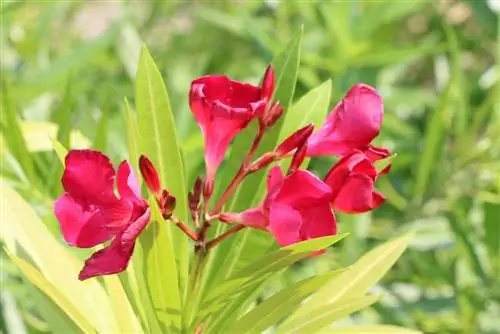
If you want to get the oleander to bloom, these causes inevitably have to be eliminated. It may happen that an improvement only occurs in the coming season. If something went wrong during the winter, it is usually difficult to correct it the following summer. It is also important to know that the oleander can certainly grow and form new leaves - and still not bloom. Basically, in order for the plant to form buds and subsequently flowers, it must be he althy and feel good.
Location
An incorrect location is by far the most common cause of the oleander not blooming. That's why you should pay very close attention to where you place the plant right from the start. A must is a very sunny location, which should also be somewhat protected from drafts. The oleander absolutely loves to be in full sun. Since the plant is usually cultivated in pots in the garden, a change of location should usually not be a big problem.
The temperatures also play a central role in other ways. Although the oleander can withstand a frosty night, it still generally finds cold nights and daytime temperatures below 18 degrees Celsius a horror. A cold or rainy summer can also be a reason why the oleander does not open its buds or why they even fall off. If the flowers fail in a summer like this, it is completely normal and not necessarily a reason to change location.
Care
Nerium oleander likes it sunny and moist. The plant actually needs a lot of water to really thrive. However, waterlogging should be avoided as much as possible. In addition, the water for irrigation must not be too cold. It is therefore advisable not to necessarily rely on rainwater but rather to use stale, tempered water from the water pipe.
Tip:
The oleander should only be poured indirectly over the saucer and not directly from above.
In addition to sufficient water, the oleander also needs a lot of nutrients in order to bloom. Weekly fertilization is therefore mandatory in spring and summer. The fertilizer is best added as a liquid fertilizer over the irrigation water. If watered and fertilized sufficiently, these are the best conditions for as many and beautiful flowers as possible. If they don't appear and the location is right, incorrect pruning could also be the cause. It's best to leave the cut complete and just remove the dead leaves.
The reason: The oleander forms a new flower or a bud directly on the inflorescence of the old flower. If you remove the old inflorescence, as is common with many other plants, it is almost impossible for the oleander to form buds.
Wintering
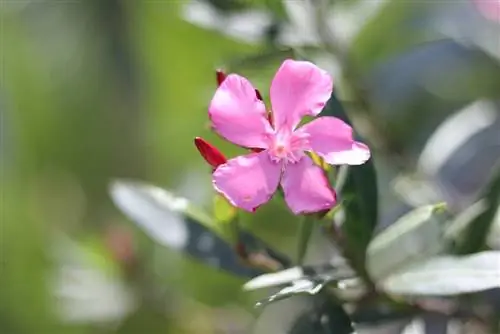
Even if the oleander can cope with frost, it definitely belongs in the house in winter. Continuous freezing temperatures would definitely mean the end of the plant. Incorrect wintering can of course also have negative consequences. Above all, it can lead to a lack of flowers in the following summer or to no buds forming at all. It is important when overwintering that it must take place in a bright location in the house. In any case, constant darkness is not good for the oleander. He likes it very bright even in winter.
However, it requires less heat. A temperature range between two and ten degrees Celsius is ideal. In addition, the room in which the plant is overwintered should be well ventilated. Incorrect wintering is also the most common cause of pest infestation or disease in the following season. Aphids in particular can be wonderfully prevented with the right temperature and good ventilation.

